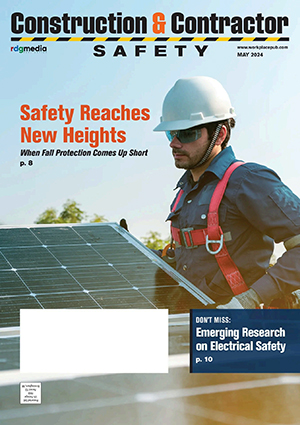Achieving the Right Balance: Tips for Comfort and Style in Workwear
Workwear plays a pivotal role in industrial hygiene because it ensures workers’ safety and well-being and boosts the professionalism of different industries as a whole. Finding the ideal balance between comfort and style in work attire is not just a matter of taste; it has a big impact on the workers’ health and cleanliness.
This article analyzes the critical role that workwear plays in maintaining workplace hygiene, looks at how fashion is incorporated into hygiene-focused clothing, and provides helpful advice for upholding the highest workwear hygiene standards.
The Importance of Workwear in Promoting Industrial Hygiene
Industrial hygiene, often known as occupational hygiene, is the study of identifying, assessing, and managing environmental elements or workplace challenges. In this case, workwear acts as the first line of protection against a variety of workplace risks. Proper work attire not only ensures physical protection but also promotes a culture of hygiene, whether it be in a manufacturing facility, healthcare environment, or construction site.
For instance, choosing the right workwear becomes crucial in workplaces where exposure to dangerous products or toxins is a constant issue. Both the worker’s safety and the integrity of the workplace can be compromised by improper or ill-fitting clothing. The significance of properly fitting workwear in preventing accidents and reducing exposure hazards cannot be overstated.
Effective workwear acts as the first line of protection against a wide range of industrial risks, including exposure to dangerous chemicals and pollutants as well as physical injuries. Wearing the proper clothing while at work protects employees and fosters a culture of cleanliness and safety, whether it’s on a construction site, at a manufacturing plant, or in a hospital.
Making wise decisions when it comes to work attire is crucial because research has shown that properly fitting workwear considerably lowers accident risks and minimizes exposure hazards. Workwear ultimately serves as the cornerstone of the larger industrial hygiene system by fostering professionalism and safety.
Combining Fashion and Hygiene-Focused Work Clothing
Although it may seem odd to combine fashion with hygienic work attire, this combination is crucial and strategically important. Fashion is crucial in today’s diverse and changing workplace, where professional identity and personal presentation are frequently entwined.
Fashion-forward work attire improves comfort, self-assurance, and general well-being, in addition to satisfying aesthetic preferences. Along with improving the visual appeal of work gear, the use of breathable fabrics, ergonomic designs, and modern color schemes ensures that workers are comfortable throughout their strenuous workdays.
Industries may combine the best aspects of fashion with hygiene-focused work attire, particularly in the wake of the devastating pandemic. Employees are given the freedom to express their personalities within set safety rules while also being protected from working hazards. This strategy promotes a pleasant workplace where style is maintained while maintaining hygiene. In the end, workwear that combines style and functionality is advantageous for both the employees and the company’s culture of excellence.
Upholding Workwear Hygiene Standards
For the safety and well-being of workers in a variety of industries, upholding workwear hygiene requirements requires a constant commitment. The maintenance of clean, sterile work gear throughout its lifespan necessitates a complex strategy.
The importance of maintaining and cleaning work gear cannot be overstated. This includes regular washing to get rid of accumulated grime, impurities, and possible infections. When not in use, workwear should be stored appropriately to avoid coming into contact with external pollutants.
To encourage hygiene, strict rules must be made and followed. Regular inspections can help spot wear and tear indicators, ensuring that any compromised or torn clothing is replaced right away to preserve safety.
Along with protecting workers, incorporating cleanliness into the workwear culture emphasizes the value of health and safety in the workplace. By following these hygiene guidelines, businesses not only safeguard their workers’ health but also create a cleaner, safer work environment, which boosts output and employee wellbeing in the long run.
Blending Elegance with Industry Norms
Workwear that successfully achieves the right balance between comfort and workwear improves both the look and usability of clothing in formal contexts. This can be done strategically and successfully. Recognizing the value of employee comfort and self-expression is equally important as following industry-specific safety and hygiene rules, which are of utmost importance.
The provision of fashionable yet legal solutions enables the smooth integration of elegance into professional attire. These could consist of well-tailored pieces, aesthetically pleasing color schemes, and fabrics that not only adhere to safety regulations but also feel good on the skin. Employee pride in their appearance is fostered by such decisions, which boost their self-assurance and happiness.
By adopting this strategy, businesses show that they are dedicated to upholding industry standards as well as fostering an office culture that respects employees’ individuality and well-being. A win-win situation where professionalism, style, and safety live peacefully is created when fashion and industry standards are in line. This improves the company’s image while also assisting in talent attraction and retention.
Involving Employees in the Workwear Selection Process
Involving employees in the selection process is one efficient way to strike the correct balance between comfort and style in workwear. Employees are more likely to be pleased with their final choice if they have a say in making it. Additionally, their opinions can offer insightful information on the comfort and usefulness of various options.
Employee involvement also strengthens a climate of respect and concern between coworkers, where the comfort and well-being of employees come first. Through a collaborative process, it is ensured that the workwear is not only hygienic but also suits the preferences and requirements of the workforce.
Conclusively, it is not only possible but crucial to strike the ideal balance between comfort and style in workwear to maintain industrial hygiene. Proper work attire not only protects workers from potential threats but also fosters a culture of cleanliness and professionalism. Industries may achieve the optimum balance in workwear by including fashion features, upholding hygienic requirements, and involving employees in the decision-making process, which will help both their staff and their overall image.
Nick Warrick is the Sales Manager at All Seasons Uniforms. With over 15 years of experience in the work uniform business, he has worked with over 100 clients across 20 different industries. Holding bachelor’s degrees in both Business Administration and Information Technology, Warrick revamped the company’s online presence, offering its customers a new uniform shopping experience.
Share on Socials!
ASSP names Safety Professional of the Year
Cal/OSHA reminds employers to prevent heat illness during period of high heat
HP sets sights on ambitious sustainability goals
Leaders in Industrial Hygiene
Council for Accreditation in Occupational Hearing Conservation (CAOHC)
Subscribe!
Sign up to receive our industry publications for FREE!










